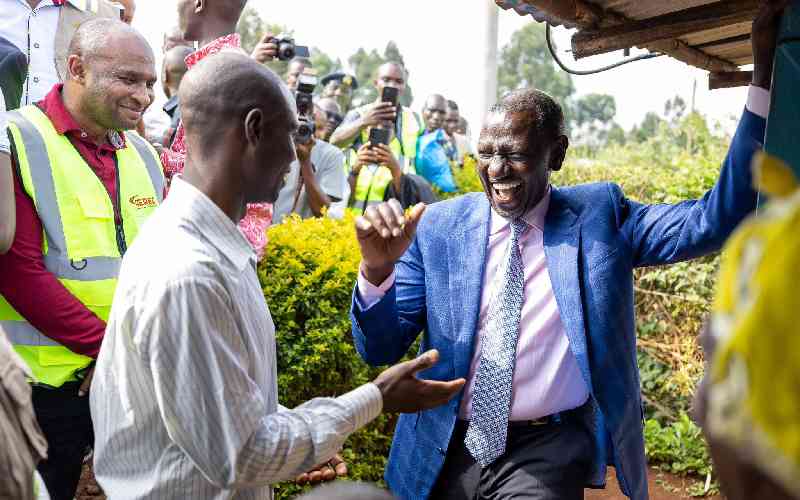
When he walked into office exactly two years ago today, many were waiting to see his style of leadership after several years on top of roofs of vehicles in an early campaign mode as he bid to succeed his boss then President Uhuru Kenyatta.
And like the famous adage, ‘the more things change, the more they remain the same’, President William Ruto has spent the better part of his two-year stint in power on top of SUVs dishing out projects.
The president has been keen on counties making several trips in all the regions to launch, relaunch, and inspect projects, while accompanied by a huge delegation of allies. The script has turned counties into a focal point of his administrative and political goals for the country. This, perhaps, explains the huge dent the trips have left on the country’s coffers. According to the Controller of Budget report for the financial year 2023/2024, State House reported a significant travel cost of Sh1.35 billion spent on domestic travel alone.
So frequent have been his trips that when he is not flying out of the country, barely a week passes before he flies to counties, either to attend churches or on development tours.
According to details gathered from the State House website, the president’s X account, and media reports, the Standard has established that by the end of August 2024, Dr Ruto had made over 100 development tours nationwide.
Most of the visits have been comprehensive with the president spending at least three days in particular regions in most of his visits.
Many have questioned whether the tours are a sincere effort by the president to deliver on his pledges and reshape his political image, or a campaign strategic maneuver in readiness to retain power in the 2027 presidential polls.
There are also concerns that Ruto’s ambitious plans to transform the counties appear to have gone off track. Several development projects have stalled, while others are yet to kick off.
There are fears taxpayers risk losing billions of shillings in projects that have been left at the mercy of vandals after contractors abandoned the sites. Others have already consumed a fortune in research, design, and elaborate launching ceremonies.
According to political commentators and analysts, Ruto’s countrywide tours are a vital component of his strategy to rebuild public trust and reassure Kenyans facing myriad of challenges.
“It was clear since he took over power that Kenyans are burdened by the high taxation imposed by his administration,” said Andrew Nyabuto, a political commentator.
His critics such as the former assistant minister Koigi Wa Wamwere argue that these endeavors, while ostensibly focused on development initiatives, also serve as tactical early presidential campaigns aimed at consolidating support across the country.
“It is the game of killing two birds with one stone,” he says, adding that since he took over power, Ruto’s administration has faced considerable backlash for its economic policies.
The development tours are, in part, also seen as an attempt to address the public dissatisfaction resulting from these policies and position Ruto as a leader actively engaged in remedying the nation’s economic woes.
Some political analysts question the timing of these tours, but his allies and supporters emphasize the development aspect of the tour, job creation, and infrastructure improvement.
Hussein Mohamed, the State House spokesman has defended the tours, saying Ruto’s approach revolves around direct engagement with citizens. Hussien argues that if anything, the presidency has been decentralized, with visits to various regions, meetings with local leaders, and even holding cabinet meetings outside the capital, a historical first for the country.
“This approach reflects a bottom-up strategy, reinforcing the commitment to engage the people as he did before he was elected. Those with a skewed view of leadership should become accustomed to this new style, as it is not about to stop,” Hussein was quoted in a section of the press.
With the 2027 presidential elections beckoning, political observers have questioned the tours that came at a time when the Ruto administration was facing serious governance challenges that triggered massive protests by Generation Z.
Former Bahati MP Kimani Nguniri says Ruto’s strategy is a way to directly address the concerns raised by citizens about his leadership.

